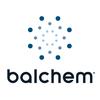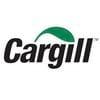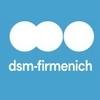Introduction
In March 2024, the CDC and USDA reported the first-ever cases of HPAI A(H5N1) in dairy cattle in the United States. As of May 2025, over 1,000 herds across 17 states have been affected, with California among the hardest hit. This unprecedented outbreak has had a significant impact on milk production, animal health, and public confidence.
The emergence of Highly Pathogenic Avian Influenza (H5N1) in California's dairy cattle since August 2024 has significantly disrupted the state's dairy industry. As of early 2025, approximately 75% of California's dairy herds have been affected, leading to a historic 9.2% decline in milk production, the most substantial drop recorded in U.S. dairy history.
This production downturn has resulted in considerable economic losses for dairy producers, including decreased revenues and increased costs associated with biosecurity measures and herd management. Despite these challenges, retail milk prices have remained relatively stable, indicating that the financial burden has been predominantly shouldered by producers rather than consumers.
The outbreak has also prompted extensive regulatory responses, including quarantines and enhanced surveillance measures, further impacting operational costs and logistics within the industry. These developments underscore the need for robust disease management strategies and support mechanisms to mitigate the economic strain on dairy farmers.
Understanding the Nutritional Challenge
From a metabolic and nutritional standpoint, viral infections such as HPAI impose an immense energy demand on dairy cows. To effectively activate the immune response, cows may require up to 5 lbs of glucose per day to fuel the production of phagocytes and other immune cells. When faced with competing energy demands, the cow prioritizes survival (maintenance) over reproduction and milk production, as illustrated in the energy utilization pyramid. Early gestation embryos and milk output are commonly sacrificed.
Energy Utilization in Sick Cows (Illustration)
This diagram visually explains the prioritization of energy by cows during illness:
Case Study: Zonneveld Dairies, California
Zonneveld Dairies, based in Laton, CA, observed a 15% decline in milk production at the peak of the outbreak, with cows in freestalls suffering more severely than those in open corrals.
The farm implemented a targeted treatment protocol for symptomatic cows using the following combination over one or two days depending on cows clinical responses:
• 2 Aspi boluses (anti-inflammatory, natural origin)
• 1 Booster bolus (energy support)
Roughly 25% of the herd was treated. Treated cows exhibited a 38 lb milk recovery compared to a 20 lb recovery in untreated cows. Abortions and deaths among early-gestation cows were significantly lower in treated groups.
Product Details: Booster and ASPI Bolus
Booster Bolus: Designed to address acute energy deficiencies during times of immune challenge, the Booster Bolus provides a high concentration of rapidly available energy with a sustainable release of 48hrs substrates to support phagocyte activity and glucose-dependent immune responses. Its role becomes critical when cows deprioritize milk production and early gestation in favor of survival, also has inulin and yeast that activates rumen bacteria improving production of butyrate on substrate cause of fermentation.
ASPI Bolus: Composed of natural salicin and flavonoids, ASPI serves as a non-synthetic, broad-spectrum anti-inflammatory agent, with not any withdrawal period. It gently modulates systemic inflammation via NF-κB pathways without the gastrointestinal and hepatic side effects associated with traditional NSAIDs. ASPI supports immune balance and cellular signaling while protecting mucosal integrity.
About AHV (Animal Health Vision)
AHV (Animal Health Vision) is a global innovator in antibiotic-free livestock health solutions. Using quorum quenching technology, AHV supports farmers in optimizing herd health, reducing antimicrobial use, and improving productivity. The company's science-based protocols enhance immune function and performance, especially during critical moments such as transition, disease outbreak, and heat stress. AHV USA is based in California and delivers personalized on-farm support to dairies across the country.
Discussion
The success of the protocol lies in addressing the core needs of sick cows: immune support, inflammation control, and metabolic energy availability. Unlike aggressive drenching, this bolus-based approach was better tolerated and easier to apply at scale. While peer-reviewed trials are lacking, field-level results provide compelling evidence of efficacy.
Visual Documentation from Field Applications
To assess the economic viability of the AHV protocol used during the HPAI outbreak at Zonneveld Dairies, a detailed ROI analysis was conducted. The following breakdown compares key financial outcomes between treated and untreated groups:
- Treated cows recovered 9 days earlier, saving approximately $162 in milk revenue.
- They also produced 18 lbs more milk per day across a 200-day lactation, generating an estimated $720 in added milk income.
- Death loss dropped from 15% to 3%, equating to $540 saved per cow.
- Abortion prevention (including semen and calf value) avoided $3,050 in loss per animal.
- The total treatment cost per cow was $54.
Net Benefit per Treated Cow: $4,418
Return on Investment (ROI): 8,181%
These figures clearly highlight the high financial return of adopting the AHV protocol during HPAI outbreaks.
Financial Impact and ROI Analysis
To assess the economic viability of the AHV protocol used during the HPAI outbreak at Zonneveld Dairies, a detailed ROI analysis was conducted. The following breakdown compares key financial outcomes between treated and untreated groups, then scales the results to a herd-level scenario (1,000 cows treated):
- Treated cows recovered 9 days earlier, saving approximately $162 in milk revenue per cow.
- They also produced 18 lbs more milk per day across a 200-day lactation, generating an estimated $720 in added milk income per cow.
- Death loss dropped from 15% to 3%, equating to $540 saved per cow.
- Abortion prevention (including semen and calf value) avoided $3,050 in loss per animal.
- The total treatment cost per cow was $54.
Per Cow Results: Net Benefit = $4,418 | ROI = 8,181%
Scaled to 1,000 Cows:
- Total Net Benefit: $4,418,000
- Total Treatment Cost: $54,000
- ROI (1,000 cows): 8,181.5%
This financial model highlights the substantial economic impact of implementing proactive health interventions like Booster and Aspi boluses during HPAI outbreaks.
Conclusion and Recommendations
California's dairy industry continues to face challenges from HPAI. Proactive nutritional strategies especially non-antibiotic protocols like the Booster + Aspi combination may play a critical role in mitigating the impact of current and future outbreaks. Producers are encouraged to collaborate with veterinarians and nutritionists to build adaptive protocols tailored to their herd dynamics.
Updated Economic Figures and National Impact
According to recent reports (TheBullVine, FarmProgress, and Nebraska Public Media), the HPAI outbreak led to the following economic impacts:
- An estimated 9.2% drop in California milk production from September 2024 to May 2025.
- More than 50,000 dairy cows have been either culled or dried off early and redirected to beef.
- National milk production also declined slightly, but prices remained relatively stable due to market controls and stable retail demand.
- Estimated economic losses for California dairy farmers exceed $890 million, considering lost productivity, animal losses, increased biosecurity costs, and labor impact.
- As of May 2025, the USDA has allocated over $230 million in emergency support and testing reimbursements nationwide.
- Reports indicate 45 dairies nationwide and at least 12 in California either suspended operations or permanently closed due to the outbreak’s financial strain.
Author Information
Carlos Jimenez Marchán is an Animal Production Engineer with a Master’s in Advanced Animal Nutrition and an MBA major in Business Intelligence. With over 20 years of experience in swine and now dairy production across Latin America and the United States, he currently serves as Farm Advisor at AHV USA. His work has focused on reducing antibiotic use, validating novel technologies such as quorum quenching, and delivering measurable results for producers. Carlos has been recognized as a top performer in the U.S. dairy sector and is a frequent speaker at technical conferences in North and South America.














